Ultimate HubSpot Onboarding Guide for Businesses
 Dean Infotech Tuesday, September 16, 2025
Dean Infotech Tuesday, September 16, 2025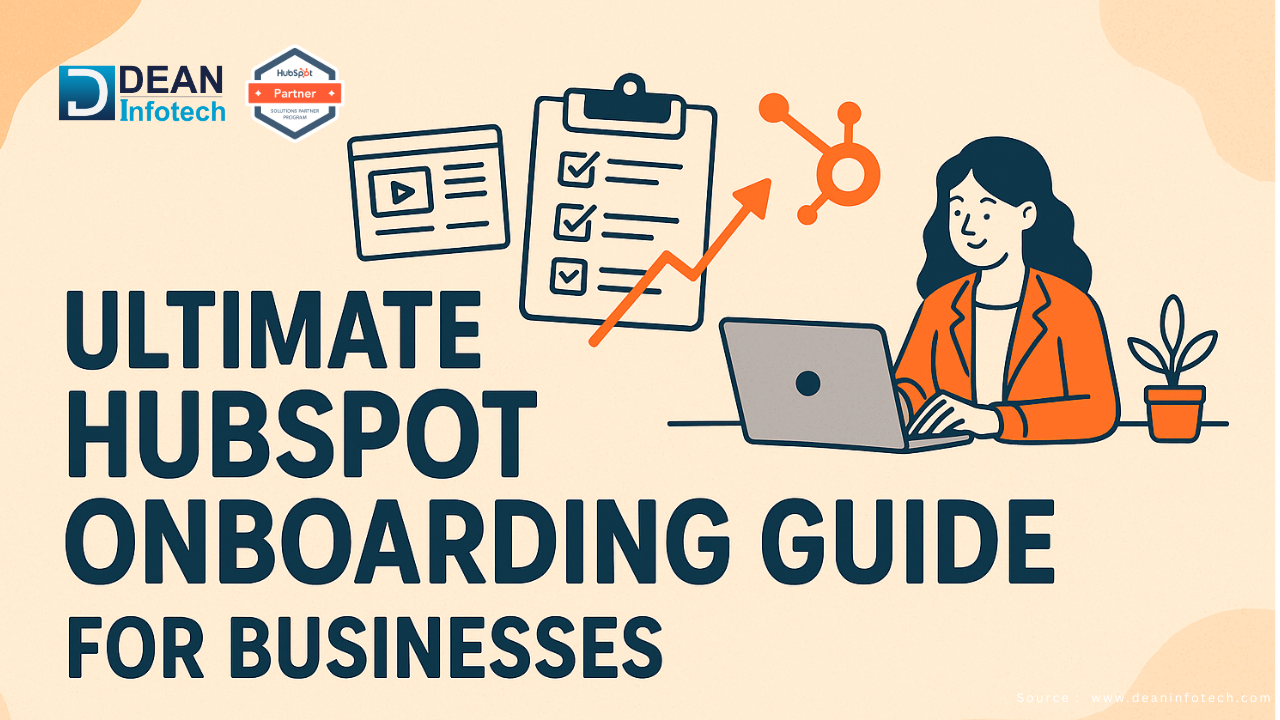
When it comes to streamlining business operations, boosting customer relationships, and driving measurable growth, HubSpot has become the go to platform for organizations worldwide. From marketing automation and sales enablement to customer service and reporting, HubSpot provides an all-in-one solution that empowers teams to work smarter, not harder.
But here’s the catch: simply investing in HubSpot isn’t enough. To unlock its full potential, businesses need a structured and strategic onboarding process. Without proper onboarding, companies often struggle with low adoption rates, missed opportunities, and underutilized tools.
This is where HubSpot onboarding makes the difference. It ensures that your teams not only understand how to use HubSpot but also align it with your unique business goals and workflows. Whether you’re a small business setting up your first CRM or a growing enterprise migrating from another system, effective onboarding sets the foundation for long-term success.
In this guide, we’ll walk you through everything you need to know about HubSpot onboarding, what it is, why it matters, the step-by-step process, and proven strategies to make the transition smooth and impactful for your business.
What is HubSpot Onboarding?
HubSpot Onboarding is the structured process of setting up, configuring, and customizing your HubSpot account so that it fits your business needs from day one. Think of it as the roadmap that guides your team from being new users to confident experts who know exactly how to leverage HubSpot’s tools to achieve your goals.
At its core, HubSpot onboarding isn’t just about learning the platform—it’s about aligning HubSpot with your sales, marketing, and customer service processes. The right onboarding ensures that data is organized, pipelines are optimized, automation is set up correctly, and your team knows how to make the most of every feature.
Key Purposes of HubSpot Onboarding:
Smooth Transition: Helps businesses migrate from existing CRMs or spreadsheets into HubSpot without losing critical data.
Customization: Tailors HubSpot’s modules (Marketing, Sales, Service, or CMS) to match your workflows.
Adoption & Training: Ensures that every team member—from marketers to sales reps—understands how to use the platform effectively.
Faster ROI: By setting up the system correctly from the start, businesses can start generating measurable results quickly.
Without a proper onboarding process, businesses risk low adoption rates, inefficient workflows, and wasted investment. HubSpot onboarding bridges the gap between having a powerful tool and actually driving growth with it.
Preparing for HubSpot Onboarding
Before you dive into the technical setup, it’s important to lay a strong foundation. Preparing well for HubSpot onboarding not only speeds up the process but also ensures that your business gets the maximum value from the platform. Here are three essential steps to get started:
1. Setting Clear Business Goals
HubSpot is a powerful tool, but it works best when aligned with your business objectives. Define what success looks like for your organization. Are you trying to generate more qualified leads? Shorten the sales cycle? Improve customer retention?
Setting measurable goals and KPIs early on will guide how you configure HubSpot and help you track results effectively.
👉 Example: A B2B company may set a goal of increasing marketing-qualified leads (MQLs) by 30% in the next six months.
2. Aligning Teams: Sales, Marketing, and Service
HubSpot is designed to unify customer-facing teams, but this only works when everyone is aligned from the start.
Sales needs clean pipelines, deal stages, and automation to close deals faster.
Marketing requires proper campaign tracking, email templates, and lead nurturing workflows.
Service needs ticketing systems, knowledge bases, and feedback surveys to deliver great customer experiences.
By bringing these teams together before onboarding begins, you’ll avoid miscommunication, duplicated work, or mismatched processes later.
👉 Pro Tip: Host a kickoff meeting where all departments discuss their pain points and expectations from HubSpot.
3. Gathering Data & Assets for Migration
One of the most important steps in onboarding is preparing your data. Make sure you gather:
Contacts & Company records (cleaned and de-duplicated)
Historical deals & pipeline information
Marketing assets like email templates, landing page designs, and campaign lists
Service records such as customer tickets or FAQs
Cleaning and organizing your data before migration prevents errors and ensures that your team starts with accurate, reliable information.
👉 Remember: Bad data in = bad results out. Use onboarding as an opportunity to declutter and standardize your databases.
Step-by-Step HubSpot Onboarding Process
Once your business goals and teams are aligned, it’s time to roll up your sleeves and start the actual onboarding process. Here’s a breakdown of the essential steps to successfully HubSpot Implementation:
1. Account Setup & Initial Configuration
The first step is to get your HubSpot account up and running. This includes:
Configuring company details and branding (logos, domain, time zone, etc.)
Setting up user roles and permissions to ensure data security
Connecting your email and calendar for smooth communication
Enabling tracking codes to capture visitor activity on your website
👉 This step builds the foundation for all other HubSpot functions.
2. CRM Customization (Properties, Pipelines, Dashboards)
Every business works differently, so your CRM setup should reflect your processes.
Properties: Create custom fields for contacts, companies, or deals (e.g., industry type, lead source).
Pipelines: Customize deal stages to match your sales cycle, from prospecting to closed-won.
Dashboards: Build tailored reports for sales, marketing, and service teams to monitor KPIs in real time.
👉 Customization ensures HubSpot fits your workflow, not the other way around.
3. Contact & Data Migration
Migrating data into HubSpot is one of the most critical steps.
Import contacts, companies, deals, and notes using CSV files or API connections.
Deduplicate and clean your database before importing.
Map your old system’s fields to HubSpot properties to avoid losing data.
👉 A clean migration helps your team hit the ground running without confusion.
4. Integrations with Existing Tools
HubSpot Integrations works best when connected to the tools you already use.
Email & Calendars: Gmail, Outlook, or Office 365
Communication Tools: Slack, Zoom, or Microsoft Teams
E-commerce & Payments: Shopify, Stripe, QuickBooks
Marketing Tools: Google Ads, LinkedIn Ads, social media platforms
👉 With integrations, HubSpot becomes your single source of truth across all departments.
5. Setting Up Marketing Campaigns and Workflows
HubSpot’s marketing automation is one of its most powerful features. During onboarding, set up:
Email marketing campaigns with branded templates
Landing pages and forms to capture leads
Lead scoring to prioritize prospects for sales teams
Workflows to automate nurturing, follow-ups, and internal tasks
👉 Proper automation saves time, reduces manual work, and increases lead conversion.
Also Read : Guide to Hubspot Marketing Hub Automation
6. Training Your Team
Even the best setup won’t succeed without adoption. Training ensures your team knows how to use HubSpot effectively.
Sales teams learn how to manage pipelines, log activities, and use sequences.
Marketing teams get trained on campaign creation, workflows, and analytics.
Service teams understand ticketing, live chat, and surveys.
👉 Ongoing training, not just a one-time session, is key to long-term success.
Detailed HubSpot Onboarding Checklist
1. Account Setup & Initial Configuration
Create and verify your HubSpot account.
Add company details (name, logo, website domain, time zone, currency).
Configure branding settings (email signature, logo, colors).
Connect your primary domain and subdomains for landing pages, blog, and email sending.
Set up user accounts and assign appropriate roles & permissions for each team member.
Connect company-wide email (Gmail, Outlook, or Office 365).
Sync team calendars for meetings and scheduling links.
Install HubSpot tracking code on your website for visitor analytics.
Set up cookie consent banner (GDPR compliance if applicable).
Configure system defaults (language, time zone, fiscal year settings).
2. CRM Customization (Properties, Pipelines, Dashboards)
Define key contact properties (e.g., lead source, lifecycle stage, deal value).
Create custom properties for unique business needs.
Build sales pipelines with accurate deal stages (Prospect → Demo → Negotiation → Closed).
Customize deal stage properties (e.g., expected close date, deal probability).
Set up ticket pipelines for service requests (if using Service Hub).
Build dashboards for Sales, Marketing, and Service teams with KPIs like:
Sales: deals closed, pipeline value, conversion rate
Marketing: leads generated, campaign ROI, form submissions
Service: ticket resolution time, customer satisfaction
Create team-specific reports for visibility and accountability.
3. Contact & Data Migration
Audit your current CRM/spreadsheet for duplicate or outdated records.
Standardize formats (email, phone numbers, company names).
Segment data into categories (Contacts, Companies, Deals, Tickets).
Export data into CSV files or prepare for API-based migration.
Map old fields to HubSpot properties for seamless import.
Import contacts, companies, deals, notes, and activities.
Enable deduplication rules to avoid duplicate records.
Test sample imports before uploading all data.
Verify accuracy post-import (spot-check records).
Create lists/segments based on lifecycle stage or persona.
4. Integrations with Existing Tools
Connect email inboxes for company-wide visibility.
Sync Google Workspace or Microsoft 365 accounts.
Integrate communication platforms (Slack, Zoom, Microsoft Teams).
Connect ad accounts (Google Ads, Facebook Ads, LinkedIn Ads).
Integrate social media platforms for publishing and monitoring.
Connect finnce & e-commerce systems (Shopify, WooCommerce, Stripe, QuickBooks).
Enable integrations with project management tools (Asana, Trello, Jira).
Set up Zapier or HubSpot Operations Hub for custom integrations.
Test integrations to confirm proper syncing of data and activities.
5. Setting Up Marketing Campaigns & Workflows
Create and brand email templates with company colors and logos.
Build landing pages for lead capture (offers, events, resources).
Add forms with progressive fields for smarter data collection.
Define lead scoring rules (demographic + behavioral criteria).
Create lists/segments (e.g., by industry, buyer persona, lifecycle stage).
Build nurture workflows for new leads (welcome emails, follow-ups, content delivery).
Automate internal notifications for sales when high-value leads engage.
Set up chatbots or live chat for instant website engagement.
Track UTM parameters for campaign attribution.
Test all campaigns/workflows before going live.
6. Training Your Team
Conduct kickoff training sessions for all teams.
Sales Team Training:
Managing pipelines and logging activities
Using sequences, tasks, and templates
Creating and sharing quotes
Marketing Team Training:
Email marketing and landing page setup
Lead nurturing workflows
Campaign analysis and reporting
Service Team Training:
Using ticket pipelines and SLAs
Setting up knowledge base articles
Managing surveys and feedback loops
Share HubSpot Academy resources for ongoing learning.
Assign HubSpot Champions within each department for support.
Schedule refresher sessions every 2–3 months.
7. Post-Onboarding Optimization
Review KPIs against initial onboarding goals.
Gather feedback from teams on usability and gaps.
Optimize workflows and reports based on usage.
Automate repetitive tasks to improve efficiency.
Explore advanced HubSpot features (ABM tools, custom reports, predictive scoring).
Create a roadmap for scaling HubSpot as your business grows.
Common Challenges in HubSpot Onboarding
While HubSpot is designed to be user-friendly, the onboarding journey often comes with hurdles that can slow down adoption and impact ROI. Being aware of these challenges in advance can help you plan better and avoid costly mistakes.
1. Lack of Clear Goals
One of the biggest pitfalls is jumping into HubSpot without defining success metrics. Without clear goals (like increasing qualified leads or improving deal close rates), teams end up using HubSpot in silos and struggle to measure results.
👉 Solution: Set SMART goals (Specific, Measurable, Achievable, Relevant, Time-bound) before you begin onboarding.
2. Poor Data Quality During Migration
Importing unclean, duplicate, or outdated data leads to confusion and inefficiencies. If “bad data” goes in, HubSpot’s reporting and automation will also be inaccurate.
👉 Solution: Deduplicate, clean, and segment your data before migration. Run test imports to ensure accuracy.
3. Misalignment Between Teams
If sales, marketing, and service teams aren’t aligned, each department configures HubSpot differently. This creates data silos, inconsistent reporting, and missed opportunities.
👉 Solution: Host a kickoff meeting with all stakeholders and create shared definitions for leads, deal stages, and customer touchpoints.
4. Overcomplicating Setup
New users sometimes try to set up every feature at once, leading to cluttered pipelines, unnecessary properties, and confusing workflows. This overwhelms teams and lowers adoption rates.
👉 Solution: Start simple. Roll out essential features first (CRM, pipelines, email templates), then expand gradually.
5. Limited Team Training & Adoption
Even with the best setup, HubSpot won’t deliver results if teams don’t use it consistently. A lack of proper training often leads to resistance or underutilization of features.
👉 Solution: Invest in ongoing training, assign HubSpot champions in each department, and leverage HubSpot Academy.
6. Integration Challenges
Connecting HubSpot with existing tools (ERP, finance, or e-commerce systems) can be tricky, especially if the setup is complex or requires custom APIs.
👉 Solution: Use HubSpot’s native integrations where possible and consult a HubSpot Partner for custom needs.
7. Unrealistic Expectations
Many businesses expect instant results after onboarding. In reality, HubSpot requires time, testing, and optimization to deliver measurable outcomes.
👉 Solution: Treat onboarding as a foundation-building phase. Track progress, optimize workflows, and give teams time to adapt.
Best Practices for Successful HubSpot Onboarding
Getting started with HubSpot is exciting, but success depends on how effectively you manage the onboarding process. By following proven best practices, you can avoid common pitfalls, accelerate adoption, and ensure that HubSpot delivers long-term value to your business.
1. Define Clear Objectives from the Start
Don’t dive into onboarding without knowing what you want to achieve. Whether it’s generating more leads, improving sales efficiency, or enhancing customer support, clear goals help guide your setup and measure progress.
👉 Pro Tip: Document 3–5 measurable objectives and align them with HubSpot features.
2. Prioritize Data Quality
HubSpot is only as powerful as the data you feed into it. If you migrate duplicate or outdated records, your reports and automation will be unreliable.
👉 Pro Tip: Deduplicate contacts, standardize naming conventions, and remove inactive records before importing.
3. Keep Teams Aligned Across Departments
HubSpot is most effective when Sales, Marketing, and Service teams collaborate. If each team configures HubSpot differently, you’ll end up with silos.
👉 Pro Tip: Create shared definitions for lifecycle stages (Lead, MQL, SQL, Customer) to keep everyone on the same page.
4. Start Simple, Scale Gradually
It’s tempting to use every HubSpot feature at once, but overcomplicating things early on can overwhelm your team.
👉 Pro Tip: Begin with the core CRM setup, then gradually roll out workflows, automation, and advanced features.
5. Invest in Team Training & Adoption
Technology only works when people use it effectively. Training ensures teams are confident in navigating HubSpot and adopting best practices.
👉 Pro Tip: Leverage HubSpot Academy and schedule internal workshops tailored to your processes.
6. Document Your Processes
Many businesses skip documentation during onboarding, which makes future updates confusing. A process playbook ensures consistency, especially when new team members join.
👉 Pro Tip: Document pipelines, workflows, and naming conventions as you set them up.
7. Use HubSpot’s Native Integrations First
Before opting for custom integrations, explore HubSpot’s marketplace. Native integrations are easier to set up and maintain.
👉 Pro Tip: Integrate essential apps like Gmail/Outlook, Zoom, Slack, and LinkedIn Ads during onboarding.
8. Continuously Monitor & Optimize
Onboarding isn’t a one-time event. As your business evolves, so should your HubSpot setup. Regular audits and optimizations ensure ongoing success.
👉 Pro Tip: Review dashboards monthly and tweak workflows based on performance.
✨ Key Takeaway: Successful HubSpot onboarding isn’t just about setting up tools—it’s about aligning people, processes, and technology to work seamlessly together.
How Long Does HubSpot Onboarding Take?
The time required to complete HubSpot onboarding depends on the size of your business, the complexity of your processes, and the number of Hubs you’re implementing. While some companies can get started in a few weeks, others may take several months to fully set up, train, and optimize.
Typical Timelines:
Small Businesses / Startups (1 Hub, basic CRM needs):
Onboarding can take 2–4 weeks. This usually involves CRM setup, simple pipelines, basic email campaigns, and essential training.
Mid-Sized Companies (2–3 Hubs, multiple teams):
Expect onboarding to last 6–8 weeks. Data migration, custom properties, marketing workflows, and integrations take more time, especially when multiple teams (sales, marketing, service) are involved.
Large Enterprises (Full HubSpot Suite, advanced customization):
For organizations migrating from complex legacy systems or integrating multiple tools, onboarding may take 3–6 months. This timeline allows for phased rollouts, advanced automation, and in-depth team training.
Factors That Affect Onboarding Time:
Number of Hubs purchased (CRM, Marketing, Sales, Service, CMS, Operations)
Volume and cleanliness of data to be migrated
Level of customization required (custom properties, workflows, dashboards)
Number of integrations with third-party systems
Team availability for training and adoption
Internal vs. Partner-led onboarding approach
Pro Tip:
Instead of rushing through setup, focus on building a strong foundation. A phased onboarding—starting with the essentials and gradually adding complexity—ensures smoother adoption and long-term ROI.
Also Read : Hubspot CRM for Small Businesses
DIY Setup vs. HubSpot Onboarding Partner
When businesses adopt HubSpot, one of the first decisions they face is whether to set up the platform on their own (DIY) or work with a certified HubSpot Onboarding Partner. Both options come with unique pros and cons, depending on your team’s expertise, resources, and business goals.
DIY Setup
Pros:
Cost-Effective: Saves money upfront as you avoid paying professional service fees.
Full Control: Your team manages everything, giving you flexibility to experiment with settings and workflows.
Learning Opportunity: Great for teams who want to deeply understand HubSpot by working hands-on.
Cons:
Time-Consuming: The learning curve can slow down adoption, leading to delays in execution.
Risk of Errors: Incorrect configurations (workflows, pipelines, integrations) can cause issues later.
Limited Expertise: Without prior experience, it’s easy to miss advanced features or best practices.
HubSpot Onboarding Partner
Pros:
Expert Guidance: Certified HubSpot Partners bring proven experience and know how to tailor HubSpot to your business needs.
Faster Implementation: Streamlined setup saves time and accelerates ROI.
Customization: Partners align HubSpot tools (CRM, Marketing, Sales, Service, etc.) with your specific workflows.
Ongoing Support: Many partners provide training, strategy, and troubleshooting for smooth adoption.
Cons:
Additional Cost: Working with a partner requires investment, which might be challenging for small businesses with tight budgets.
Less Control: Some businesses feel reliant on external expertise instead of managing everything in-house.
✅ When to choose DIY:
Small teams with simple processes.
Budget constraints are a priority.
In-house team has technical skills and CRM experience.
✅ When to choose a Partner:
Medium to large businesses with complex processes.
Need for fast results and ROI.
Lack of internal HubSpot expertise or time to manage setup.
Conclusion
HubSpot Onboarding is more than just setting up a tool—it’s about building a strong foundation for your marketing, sales, and customer service teams to succeed. Whether you choose a DIY approach or work with a certified HubSpot Onboarding Partner, the ultimate goal is to align HubSpot with your unique business goals, streamline workflows, and empower your team to use the platform effectively. With the right onboarding process, HubSpot becomes a powerful growth engine that drives ROI, improves customer relationships, and simplifies operations.
Frequently Asked Questions (FAQs)
1. What exactly is HubSpot Onboarding?
HubSpot Onboarding is the process of setting up, customizing, and training your team to use HubSpot’s CRM, marketing, sales, and service tools effectively.
2. How long does HubSpot Onboarding take?
On average, onboarding takes 4–12 weeks, depending on the complexity of your business processes, integrations, and team size.
3. Can I do HubSpot Onboarding myself?
Yes, businesses with simple workflows and technical know-how can set it up themselves. However, working with a partner helps avoid mistakes and speeds up implementation.
4. Do I need to pay extra for HubSpot Onboarding?
Yes. HubSpot charges a mandatory onboarding fee unless you work with a certified partner who can provide onboarding services instead.
5. What’s included in HubSpot Onboarding?
Typical onboarding includes CRM setup, data migration, integrations, email templates, pipeline creation, workflows, reporting dashboards, and team training.
6. What are the biggest challenges in HubSpot Onboarding?
The most common challenges include data migration errors, integration issues, underutilizing features, and lack of team adoption.
7. How do I know if I need a HubSpot Onboarding Partner?
If your business has complex sales/marketing processes, limited technical expertise, or wants fast ROI, working with a partner is the best choice.
8. What happens if I skip HubSpot Onboarding?
Without proper onboarding, you risk low adoption, poor data management, and missed opportunities to leverage HubSpot’s full potential.
9. Can HubSpot Onboarding be customized to my business?
Yes. A certified partner can tailor the setup to your specific workflows, goals, and industry needs.
10. Is HubSpot Onboarding a one-time process?
Onboarding is typically a one-time setup process, but ongoing optimization and training ensure long-term success as your business grows.


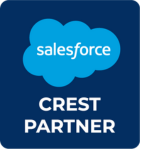
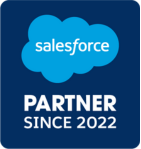
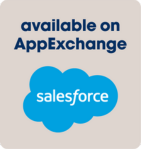
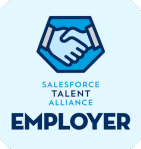


Comment